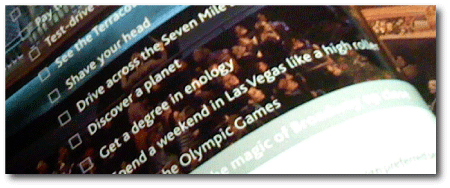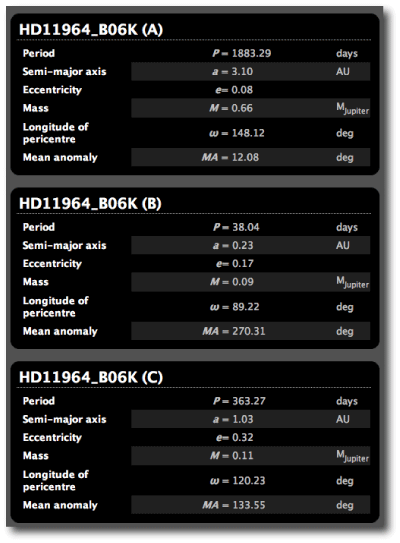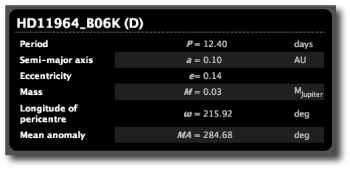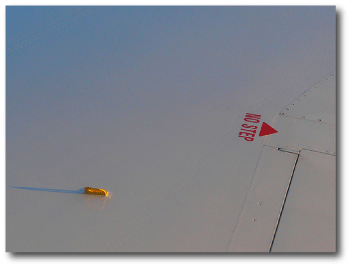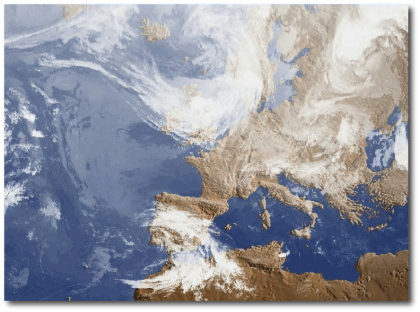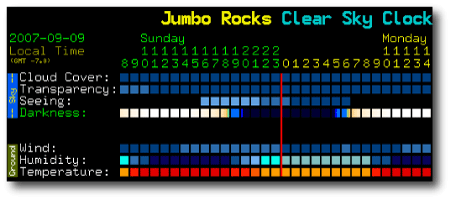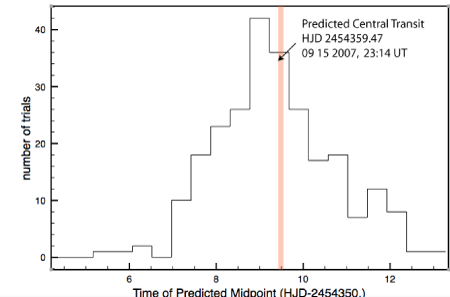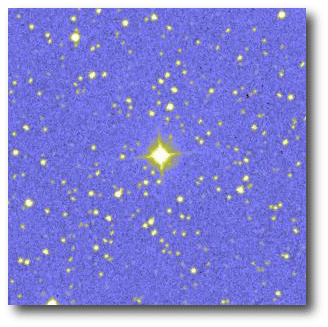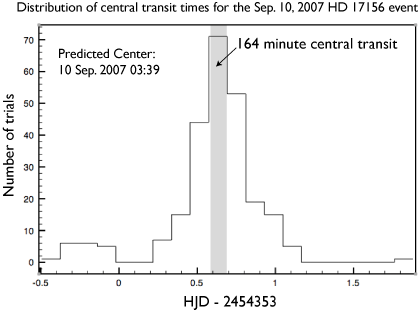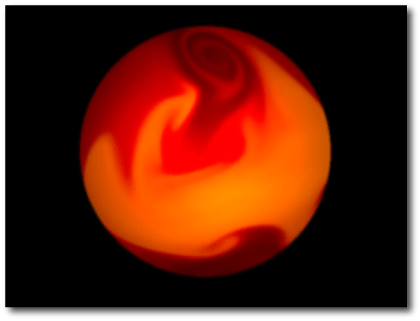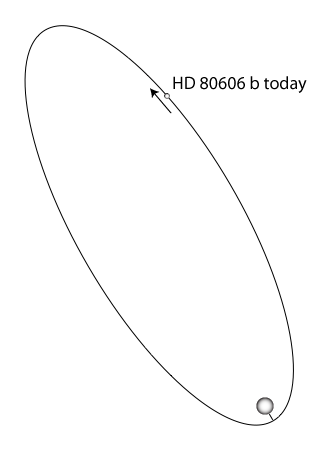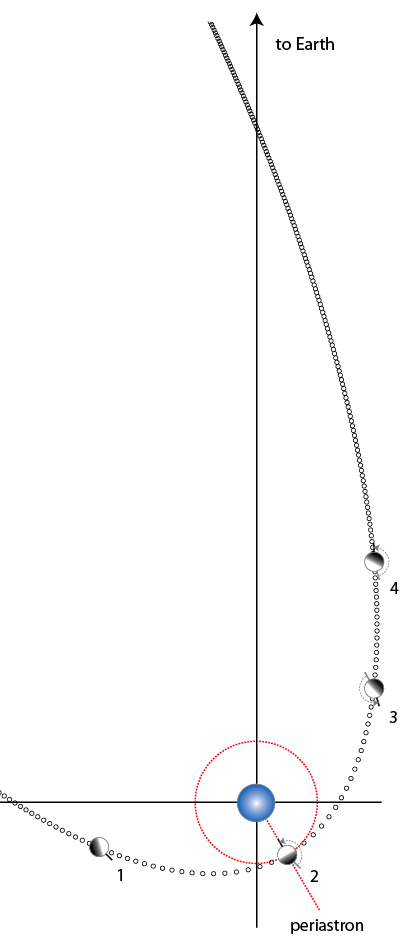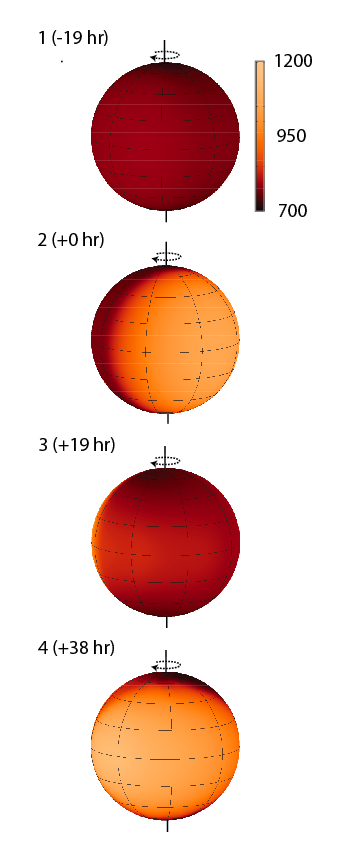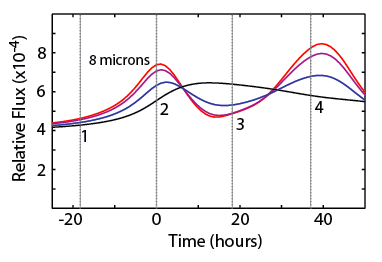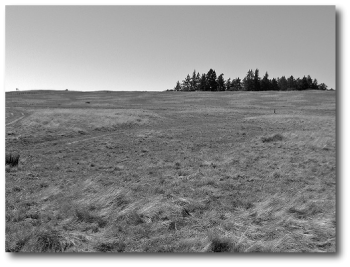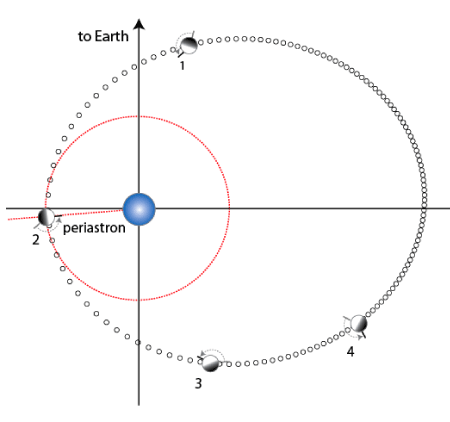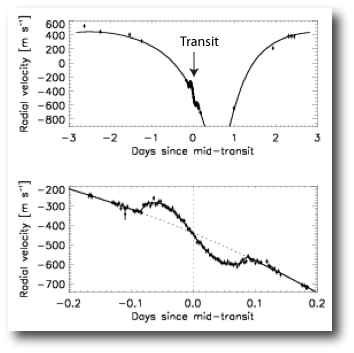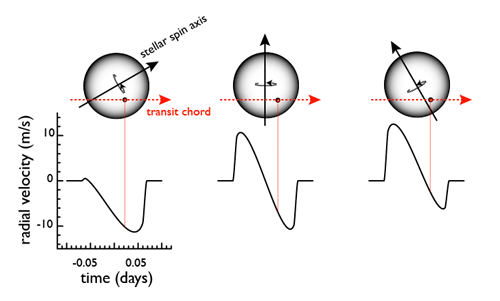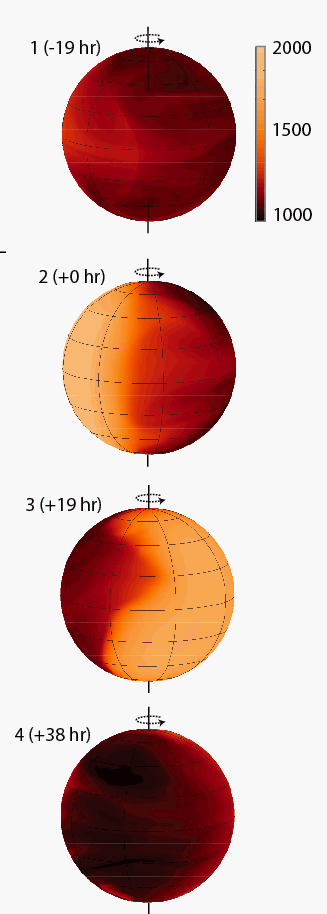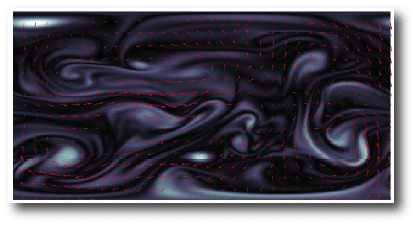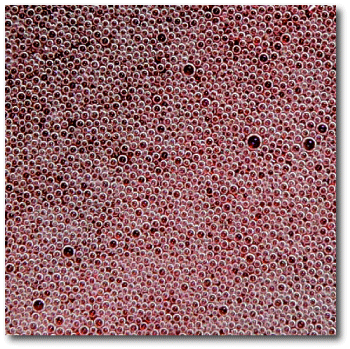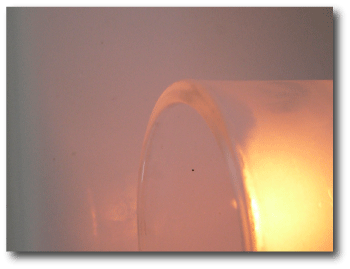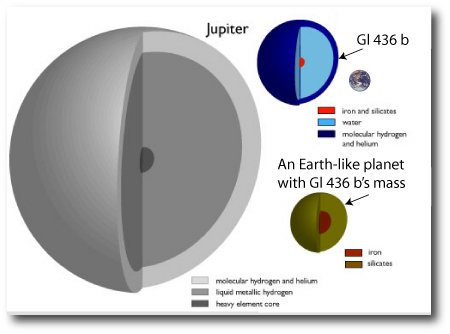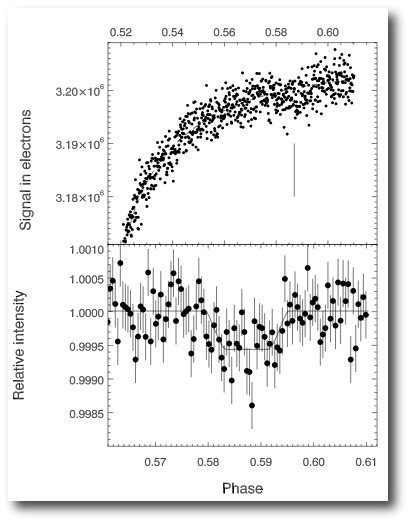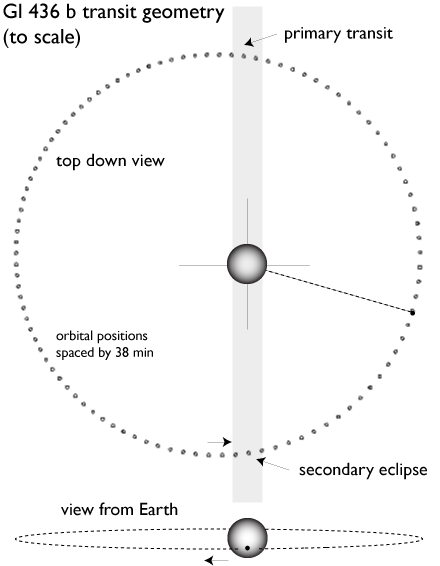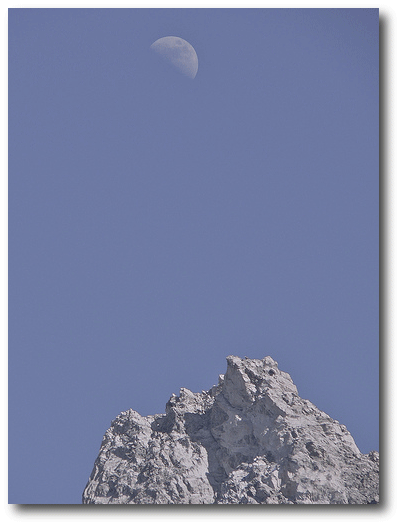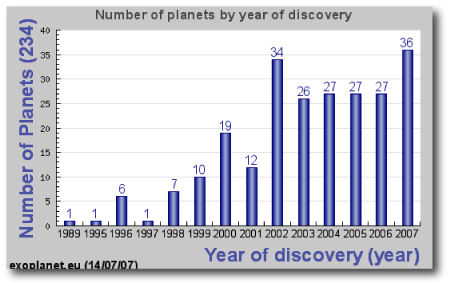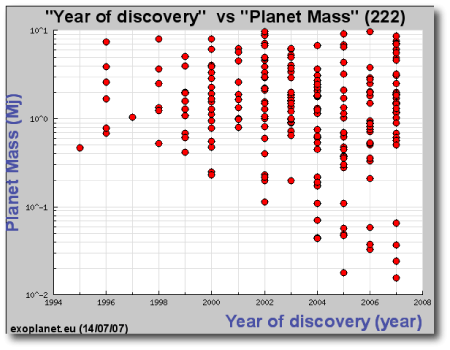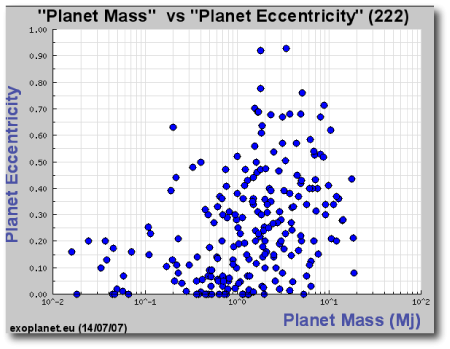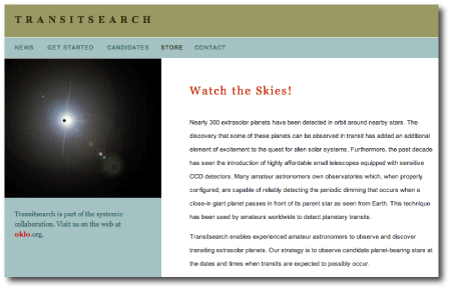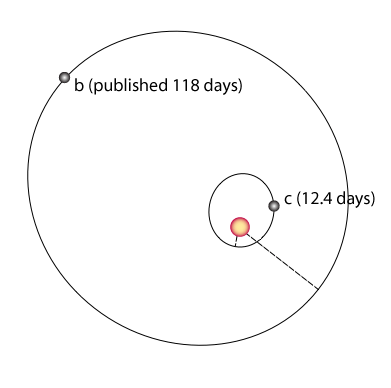
Image Source.
There remain three blockbuster, front-page discoveries in exoplanetary science. The first is the identification of a potentially habitable Earth-mass planet around another star. The second is the detection of a life-bearing planet. The third is contact with extraterrestrial intelligence.
It’s hard to predict when (and in which order) discoveries #2 and #3 will take place. Discovery #1, on the other hand, is imminent. We’re currently 2±1 years away from the detection of the first habitable Earth-mass planet (which implies ~15% chance that the announcement will come within one year).
The breakthrough detection of a habitable Earth will almost certainly stem from high-precision Doppler monitoring of a nearby red dwarf star, and already, both the Swiss team and the California-Carnegie team are coming tantalizingly close. The following table of notable planet detections around red dwarfs gives an interesting indication of how the situation is progressing:
| Planet |
M star
|
M sin(i)
|
date |
K |
#obs |
sig |
µ |
| Gl 876 b |
0.32 |
615 |
1998 |
210 |
13 |
6.0 |
247 |
| Gl 876 c |
0.32 |
178 |
2001 |
90 |
50 |
5.0 |
127 |
| Gl 436 b |
0.44 |
22.6 |
2004 |
18.1 |
42 |
4.5 |
26 |
| Gl 581 b |
0.31 |
15.7 |
2005 |
13.2 |
20 |
2.5 |
23 |
| Gl 876 d |
0.32 |
5.7 |
2005 |
6.5 |
155 |
4.0 |
20 |
| Gl 674 b |
0.35 |
11.8 |
2007 |
8.7 |
32 |
0.82 |
60 |
| Gl 581 d |
0.31 |
7.5 |
2007 |
2.7 |
50 |
1.23 |
16 |
| Gl 581 c |
0.31 |
5.0 |
2007 |
2.4 |
50 |
1.23 |
14 |
The masses of the stars and planets are given in Solar and Earth masses respectively. The year of discovery for each planet is listed, along with the half-amplitude, K, of the stellar reflex velocity (in m/s), the number of RV observations on which the detection was based, the average reported instrumental error (sigma) associated with the discovery observations, and a statistic, “µ”, which is K/sigma multiplied by the square root of the number of observations at the time of announcement. The µ-statistic is related to the power in the periodogram, and gives an indication of the strength of the detection signal at the time of discovery. In essence, the lower the µ, the riskier (gutsier) the announcement.
What will it take to get a habitable Earth? Let’s assume that a 0.3 solar mass red dwarf has an Earth-mass planet in a habitable, circular, 14-day orbit. The radial velocity half-amplitude of such a planet would be K=0.62 m/s. Let’s say that you can operate at 1.5 m/s precision and are willing to announce at µ=20. The detection would require N=2,341 radial velocities. This could be accomplished with an all-out effort on a proprietary telescope, but would require a lot of confidence in your parent star. To put things in perspective, the detection would cost ~10 million dollars and would take ~2 years once the telescope was built.
Alternately, if the star and the instrument cooperate to give a HARPS-like precision of 1 m/s, and one is willing to call CNN at µ=14, then the detection comes after 500 radial velocities. The Swiss can do this within 2 years on a small number of favorable stars using HARPS, and California-Carnegie could do it on a handful of the very best candidate stars once APF comes on line. Another strategy would be to talk VLT or Keck into giving several weeks of dedicated time to survey a few top candidates. Keck time is worth ~$100K per night, meaning that we’re talking a several-million dollar gamble. Any retail investor focused hedge funds out there want to make a dramatic marketing impact? Or for that matter, with oil at $68 a barrel, a Texas Oil Man could write a check to commandeer HET for a full season and build another one in return. “A lone star for the Lone Star.”
If I had to bet on one specific headline for one specific star, though, here’s what I’d assign the single highest probability:
The Swiss Find a habitable Earth orbiting Proxima Centauri. Frequent visitors to oklo.org know about our preoccupation with the Alpha-Proxima Centauri triple system. We’ve looked in great detail at the prospects for detecting a habitable planet around Alpha Centauri B, and Debra Fischer and I are working to build a special-purpose telescope in South America to carry out this campaign (stay tuned for more on this fairly soon). Proxima b, on the other hand, might be ready to announce right now on the basis of a HARPS data set, and the case is alarmingly compelling.
Due to its proximity, Proxima is bright enough (V=11) for HARPS to achieve its best radial precision. For comparison, Gl 581 is just slightly brighter at V=10.6. Proxima is effortlessly old, adequately quiet, and metal-rich. If our understanding of planet formation is first-order correct, it has several significant terrestrial-mass planets. The only real questions in my mind are, the inclination of the system plane, the exact values of the orbital periods, and whether N_p = 2, 3, 4 or 5.
The habitable zone around Proxima is close-in. With an effective temperature of 2670K, and a radius 15% that of the Sun, one needs to be located at 0.03 AU from the star to receive the same amount of energy that the Earth receives from the Sun. (Feel free to post comments on tidal locking, x-ray flares, photosynthesis under red light conditions, etc. Like it or not, if the likes of Gl 581 c is able to generate habitability headlines and over-the-top artist’s impressions, just think what a 1 Earth-Mass, T=300 K Proxima Centauri b will do…) A best guess for Proxima’s mass is 12% that of the Sun. An Earth in the habitable zone thus produces a respectable K=1.5 m/s radial velocity half-amplitude. It’s likely that HARPS gets 1.2 m/s precision on Proxima. A µ=15 detection thus requires only 144 RV observations. Given that Proxima is observable for 10 months of the year at -30 South Latitude, there are presumably already more than 100 observations in the bag. We could thus get an announcement of Proxima Cen b as early as tomorrow.

